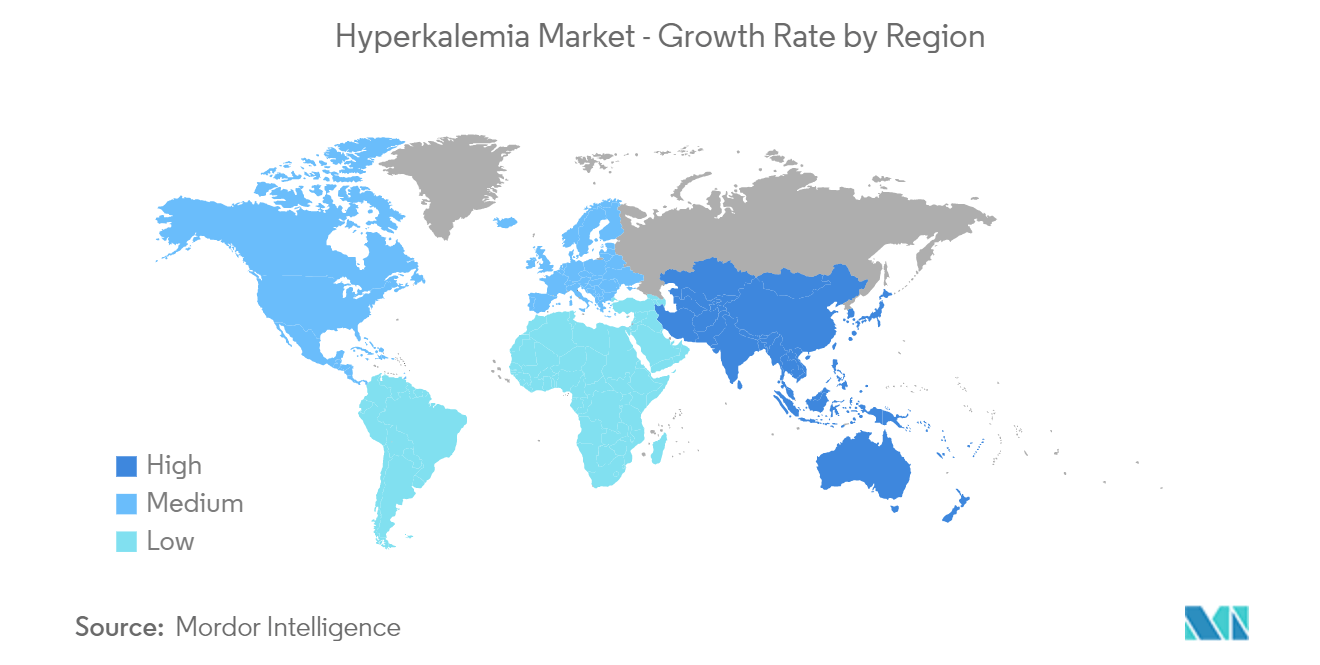Market Trends of Hyperkalemia Treatment Industry
This section covers the major market trends shaping the Hyperkalemia Treatment Market according to our research experts:
Chronic Hyperkalemia Segment is Anticipated to Witness Significant Growth Over the Forecast Period
Heart failure (HF) and chronic kidney disease (CKD) patients frequently have chronic hyperkalemia (cHK), a significant medical condition that can have detrimental effects and call for cautious management by cardiologists or nephrologists. Therefore, owing to the severity of the disease, the cHK segment is anticipated to witness growth over the forecast period.
According to the data updated by the National Kidney Foundation in 2022, it was shown that when HK develops abruptly and potassium levels become extremely high, patients can experience chest pain, nausea, vomiting, shortness of breath, and heart palpitations. Also, severe or chronic hyperkalemia can be a life-threatening condition that necessitates urgent medical attention for the patient's survival. Thus, the seriousness of the disease among the target population is expected to fuel the demand for drugs available for treatment, which is anticipated to drive market growth.
Furthermore, the research article published by PubMed in June 2021 mentioned that when a cohort study of 1,499 patients with cHK and CKD, heart failure, or diabetes mellitus was conducted with a 36-month follow-up,, the annual healthcare cost per patient with cHK was calculated to be double that of mild hyperkalemia. Hence, the burden of the condition requires more targeted drugs or therapies for treatment, which is further expected to drive segment growth.
As a result of factors such as the high prevalence of hyperkalemia, the segment is expected to grow during the analysis period.

North America is Expected to Hold a Significant Share in the Market Over the Forecast Period
North America is anticipated to witness growth over the forecast period and have a significant market share. Among other countries in the region, the United States is leading the market due to factors such as an increase in healthcare expenditure, increasing research and developments, and the rising prevalence of hyperkalemia.
As per the article published by PubMed in October 2021, HK contributes to nearly 800,000 emergency department visits annually in the United States, and the prevalence of the disease is growing owing to the aging population and the growth in associated comorbidities. Such a high burden of disease in the country is anticipated to demand the availability and development of advanced and effective drugs in the country. thereby driving the overall market growth in the region.
Furthermore, according to an article published by the Canadian Medical Association Journal in December 2021, in Canada, emergency department use is high among patients with CKD. Observational studies have associated hyperkalemia with increased hospital and intensive care unit admissions in Canada, and it was found that hyperkalemia accounts for 48% of all ambulatory care-sensitive conditions among patients on dialysis. Hence, the high burden of hyperkalemia in Canada is also expected to drive market growth.
In addition, the data updated by the CDC in February 2022 shows that in the United States, nearly 37 million adults are estimated to have CKD, and 40% of people who live with severely reduced kidney function are not aware of having CKD. Additionally, as per the source mentioned above, approximately 360 people begin dialysis treatment for kidney failure every 24 hours in the country. Thus, the burden of CKD is anticipated to increase the risk of hyperkalemia among the target population. This is expected to create urgent treatment options for the condition. which is further predicted to drive the market's growth over the analysis period.
Therefore, owing to the factors mentioned above, such as the increasing prevalence of hyperkalemia and chronic kidney disease, the market studied is anticipated to witness growth in the region.


